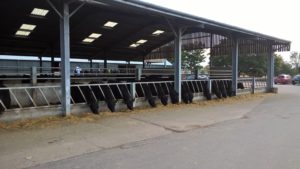Long Term Consequences Of A Late Spring
26 February 2018 Spring Calvers – Cows & Calves
Spring Calvers – Cows & Calves
- Leaner at mating, poorer fertility, more barren cows and less cows calving in the first cycle in 2019.
- The problem will be particularly severe for heifers which calve 2 or 3 weeks before the cows.
- Greater risk of magnesium tetany this spring.
- A further reduction in herd size and number of calves born spring 2019?
- More risk of calfhood diseases.
- Potentially lighter weaning weights? – Suggests creep feeding should be started earlier this summer.
Autumn Calvers
- Cows likely to be leaner at turnout and at calving next autumn. Is this a good year to wean at turnout?
- If calves are weaned at turnout would it be sensible to sell them 2 – 3 weeks later when they are over the weaning check to have more grass available and help build forage stocks up for next winter?
Growing/Finishing Cattle
- A delayed turnout will make it even more difficult to fatten cattle off grass this summer. This means there is likely to be a shortage of finished cattle in late summer/autumn which could perhaps be met by keeping more forward cattle in and finishing them intensively over the summer?
- The combination of a higher barren rate last autumn and potentially higher calf mortality this sprig means fewer suckled calves weaned this autumn, fewer for the spring 2019 store sales and fewer available for slaughter in the second half of 2019?
Sheep
- Ewes will be thinner, making it more critical to manage/feed correctly post weaning to achieve target condition scores for mating next autumn. Again is this a year for earlier weaning?
- A delay/shortage of spring grass will slow lamb finishing potentially by 2 – 3 weeks, increasing the autumn glut? Is this a year for creep feeding or starting to rotationally graze, allowing the lambs to creep forward and graze the very best of the grass?
Sign up to the FAS newsletter
Receive updates on news, events and publications from Scotland’s Farm Advisory Service


